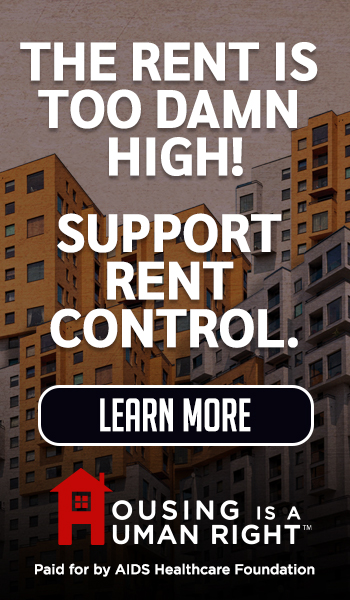Comments
AFFORDABLE HOUSING - “The law of unintended consequences, often cited but rarely defined, is that actions of people—and especially of government—always have effects that are unanticipated or unintended. Economists and other social scientists have heeded its power for centuries; for just as long, politicians and popular opinion have largely ignored it.” (Rob Norton, Forbes magazine economics editor.)
LA’s “one weird trick” to build affordable housing is to use Executive Directive No. 1’s streamlined approval process and various bonuses and incentives as a vehicle to entice private developers to build. Developers, one of whom was quoted by LAist as saying “I’m just trying to be as greedy as possible,” have come to LA to make money.
By bypassing many provisions of project review and exempting projects from various local planning procedures (such as hearings and appeals), and eliminating protections such as the California Environmental Quality Act (CEQA) and any non-objective development standards contained in the Zoning Code or other applicable overlays or planning documents, a developer can go from application to permit in 60 days.
The city maintains a data base for ED 1 projects which shows there are more than 32,000 ED 1 units in the pipeline, and over 24,000 of them have been approved and permitted. Our City Council is working to codify the ED 1 program, which means it will be permanent and the projects will continue to be built.
In a previous column, I addressed the unintended consequence of Executive Directive No. 1 harming the very ones it is supposed to help.
We are now nearly two and one-half years into ED 1, and we seeing many more unintended consequences that may and probably will result in negative outcomes for many more in the City of LA, in addition to many of the residents of ED projects. Here are some of those:
Most of the homeless from the other 87 incorporated cities in LA County and the unincorporated areas of LA County could be housed in ED 1 projects in the City of LA
One of the stated purposes of ED 1 is to house the homeless. Building affordable housing to house the homeless is an admirable goal. CES is a countywide system, and people who are unhoused anywhere within the county may be placed in ED 1 units in the City of LA.
According to the 2024 LAHSA point in time count, there were at that time 75,312 unhoused people in the county and 45,252 unhoused in the City of LA. LA City and LA County are looking to house tens of thousands of homeless, approximately 80,000.
As we are all aware, many of the 87 other cities in the County of Los Angeles have cracked down on enforcement pursuant to the authority of the U.S. Supreme Court Grants Pass case decided last year, as discussed here.
There is little question that many of the homeless required to leave other cities will go to the city or unincorporated county areas of Los Angeles, where they will not face enforcement under Grants Pass. There are reports that homeless required to leave other cities in the State of California as the crack-downs happen are coming to the city or county of Los Angeles, where there will be no crack-downs.
Regardless of how fast the City of LA runs the race to “build our way out of this,” it may not even be possible that LA can build enough ED 1 units to house all the people. And who will pay for that? The taxpayers of the City of LA, that’s who.
LA could not accurately foresee the outcome in the Grants Pass case when ED 1 was issued in December 2022. However, it’s time for the city to consider the unintended consequences resulting from that Supreme Court decision.
Allowing developers to decide where the homeless housing goes will run afoul of the Alliance settlement.
Under ED 1, developers decide where they want to put their projects. So long as existing zoning allows for the project, developers can build their projects anywhere they want so long as there is no applicable exemption, such as fire zones and coastal zones. Naturally, developers want to pay as little as possible for land in order to enhance profits.
Judge Carter who oversaw and is still overseeing the settlement in the case of the Alliance v. the City and County of Los Angeles is waiting for the city and county to meet targets established for housing the homeless in the City of LA. Those targets are set forth here and here.
The Alliance settlement contains provision prohibiting inequitable distribution of homeless housing, meaning the housing should not be consolidated in a particular council district or neighborhood in a disproportionate manner and that segregation must be avoided.
One of the express purposes of ED 1 is to house the homeless. The Alliance settlement agreement does not specify what type of projects will meet target numbers established for each council district. Therefore, it can be claimed that an ED 1 project that houses homeless meets the Alliance target numbers for each district.
A review of the ED 1 database for CD 11, for example, shows most of the ED 1 units in the district are concentrated in Westchester. Many of the projects in Westchester, totaling approximately 1,000 units to date, will be in the LAX noise contour, under or very close to the landing path of jets where there are unsafe levels of noise and air pollution because the land is cheap there, as discussed in this previous column. Developers prefer inexpensive land to make their projects “pencil out” better and, as quoted previously, some want to be “as greedy as possible.” As a result, people who are unhoused who are housed in these projects will be living in a toxic area.
Meanwhile, many communities in CD 11 do not have any ED 1 projects at all, and never will, because they have received exemptions. It is very unlikely that any homeless housing projects will be built there because residents in those areas retain the right to sue to block homeless projects.
Thus, in CD 11, with the congregation of projects in one unsafe area, segregation is already happening, and if these projects house homeless, which they undoubtedly will, this will be a clear violation of the Alliance settlement agreement. A defense of “I didn’t do it, the developers did it” may not be viewed favorably by Judge Carter.
It is undoubtedly an unintended consequence that ED 1 could or will violate the terms of Alliance settlement agreement, and one that must be addressed in order to prevent new “containment zones” for the unhoused. The city is responsible for compliance with the Alliance settlement, and should not be turning over to developers the determinations as to where homeless housing should be built, thereby dodging compliance. Judge Carter doesn’t seem to like dodging defendants in cases he is overseeing.
ED 1 approvals are delaying approvals for mixed use and mixed income projects
It seems the city would prioritize mixed income projects, which would be more consistent with the requirements of “Affirmatively Furthering Fair Housing” that 100% affordable housing projects would be. At least 80% of the units in an ED 1 project must be for people of acutely low, extremely low, very low, or low income, and no more than 20% of the units may be occupied by people with household incomes up to 80% of the median income. By definition, ED 1 projects seem to concentrate poverty. The effect of this is magnified when the project is large, such as a 413-unit ED 1 project in the pipeline in Westchester, which will be next to a 333-unit ED 1 project also in the pipeline. By the time developers finish being “greedy”, there could and probably will be thousands of low-income units congregated in this area of Westchester.
Meanwhile, developers of mixed-use projects are finding significant delays in the approval of their projects because all hands seem to be on deck approving ED 1 projects, as reported here.
The result is the unintended consequence of discouraging developers from building projects that comply with AFFH and rewarding them for developing large ED 1 projects where the land is cheap because it is unsafe to live there because of toxins, or because it is in a part of town where land values are the lowest. In a weird twist of irony, the benefits of ED 1 projects seem to accrue to the developers and not to future residents of these projects.
ED 1 has the potential to fail most of the people in the City of LA.
Another unintended consequence we are seeing is that the state will continue to pass laws that may affect residents of the City of Los Angeles. For example, Senator Scott Weiner introduced SB 79, which would allow multiple unit projects in residential zones. An ED 1 project may not be built on a residential lot for which the zoning allows a maximum of four units—which is what SB 9 would allow. If SB 79 is passed and signed into law, it would appear that ED 1 projects could be built on residential lots throughout the City of Los Angeles—except for the areas that have been exempted from any ED 1 projects at all, such as the coastal zone and very high fire severity zones.
The unintended consequences for politicians: If you don’t get this right for your constituents, we will vote you out
As discussed above, we are seeing what we may view as the “unintended consequence” of ED 1 units being concentrated in certain areas. In CD 11, that certain area is Westchester. We are left to wonder if we are the “bargaining chip” to fulfill some type of ED 1 or homeless housing quota so more affluent or politically connected communities are not required to participate in the geographic distribution of projects. ED 1 is intended to provide geographic distribution, but that is not happening in CD 11. Most of these projects are going into areas that should not have housing at all, as discussed here and here.
It appears that that Councilwoman Traci Park has determined that coastal zones and fire zones are “sensitive areas” in which no ED 1 projects should be built, but has not made a determination that the toxic area near the airport in which low-income people will be housed is not a sensitive area worthy of exemption to project the health and safety of the people living there.
We certainly do not in any way imply that very high fire severity zones are not sensitive areas. However, it is established that people living in noise contours and in areas of high pollution suffer health consequences, which can include a shortened life span, and that areas with these negative health effects should be exempted.
Suggestions to reduce the impact of the unintended consequences
This is an issue that our politicians should be addressing before LA’s “one weird trick” becomes LA’s “one weird failure” as a result of unintended consequences. Here are some starting points:
- Impose a cap on the number of ED 1 units per ZIP Code to prevent concentrations of people of low income in certain areas, consistent with the principles of AFFH and to achieve more geographic equity, which was intended by ED 1.
- Exempt homeless housing projects from the ED 1 process so the city can ensure equity and compliance with the Alliance settlement agreement, rather than abdicating this responsibility to developers decide the placement of these projects.
- Limit the size of ED 1 projects to reduce the likelihood of concentrations of poverty and segregation
- Incentivize developers to build mixed-income projects to ensure compliance with principles of Affirmatively Furthering Fair Housing.
- Exempt sensitive areas in which there will be adverse health effects for residents of the ED 1 projects, such as toxic areas next to LAX, so that ED 1 does not result in harm to the people it is intended to benefit.
Let’s call on our representatives to take these steps to reduce the impact of the unintended consequences we are seeing.
(Rosa Padilla is a retired trial attorney and lifelong Los Angeles resident who has been a vocal advocate for her Westchester community, challenging city upzoning plans that threaten local neighborhoods with overdevelopment and environmental risks.)






